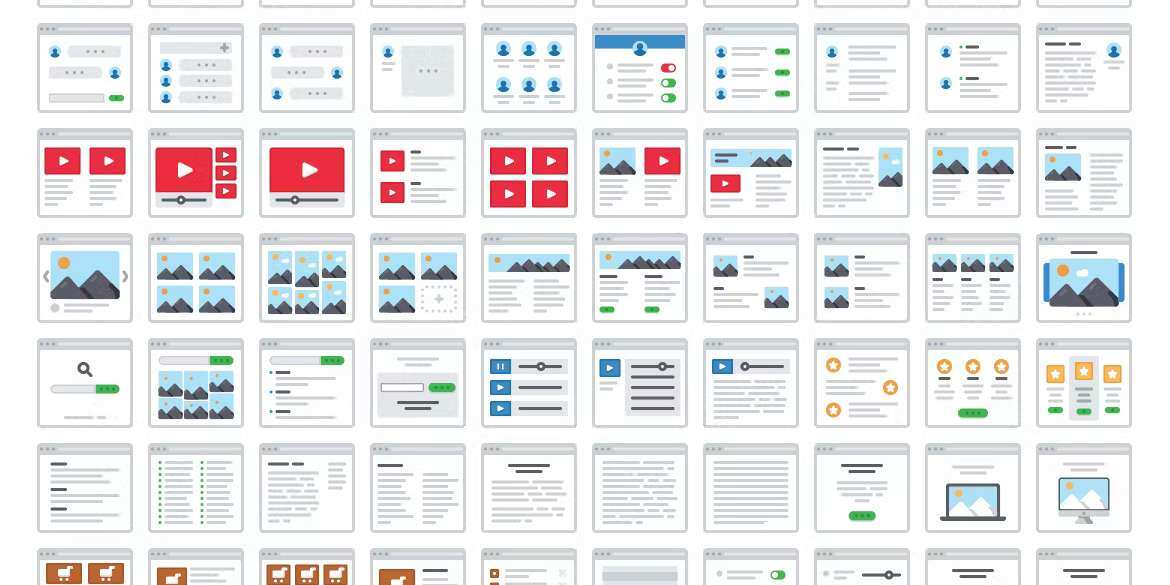As a marketing leader or CMO in a fintech startup, your website is one of the most critical assets for your brand's online presence. It's not just a digital business card. But a platform that can drive fintech sales, engage customers, and establish your position in the competitive fintech landscape.
To succeed, you must consider SEO work, mobile friendliness, content creation, internal linking, and local SEO. Fintech companies use search query rankings to drive website traffic, and once that traffic arrives, they use calls to action to convert that traffic and boost business.
Partnering with an external agency offering FinTech website design and SEO expertise can ensure your site is optimised for users and search engines when creating or redesigning your FinTech website.
Understanding the Importance of a Fintech Website
A fintech website serves as the central hub for your digital marketing efforts. It's where potential customers will go to learn about your products and services, and it's where you'll generate leads and conversions. A well-designed website can help build trust with your audience, showcase your fintech solutions, and support your sales funnel.
Choosing the Right Agency for Fintech Website Design
When selecting an agency to design your fintech website, your main priority is understanding what they’ve delivered before and for whom. In the best case, this pool of previous projects should demonstrate a clear understanding and knowledge of Fintech, and if it is in your specific niche, it is all the better. Consider the following:
- Expertise in Fintech: Look for an agency with experience in the fintech sector. They should understand the industry's unique challenges and regulatory requirements. Their portfolio should demonstrate prior experience and examples that align with your business goals.
- Portfolio and Case Studies: Review the agency's past work to assess its design capabilities and the results it has achieved for other fintech clients. Look for examples of how the agency achieved its objectives and supported its clients' business goals. Ask if they have 3rd party verified testimonials and ask to speak to their clients.
- Strategic Approach: The agency should offer a strategic approach to website design, focusing on user experience (UX), conversion rate optimisation (CRO), and aligning with your business goals. Look for how their process delivers results and be open to the latest strategies like growth-driven design.
- SEO Knowledge: Ensure the agency understands website SEO well to improve your site's visibility and organic search rankings. Identify whether the agency performs both on-page and technical or off-page search engine optimisation and how that plays into the strategy and planning of a new website project. Discover what tools they use and how their toolkit will benefit your project.
These four pillars can help you build your thoughts as you plan to speak to service providers. Now, let’s dive deeper into web design for Fintech.
Integrating Fintech Sales into Website Design
Your website should be designed with fintech sales in mind. This means creating clear user journeys, showcasing your products effectively, and including strong calls-to-action (CTAs) that guide visitors towards making a purchase or getting in touch. The agency should help you set up lead capture forms, chatbots, or other tools to facilitate sales and customer service.
More than these standard requirements, ask your agency how they plan to deliver the required results beyond simply a new front-end. Sure, a jazzy new UX will give you a short-term bounce, but beyond that, you need tactics and experiments, so keep that in mind.
Leveraging Website SEO for Fintech Growth
Website SEO is crucial for attracting organic traffic to your fintech website. The agency should conduct keyword research to identify terms your target audience is searching for and optimise your site's content and structure accordingly. This includes on-page elements like titles, meta descriptions, headers, and technical SEO aspects like site speed and mobile responsiveness.
Collaborating with the Agency
Once you've chosen an agency, collaboration is vital. The breakdown between client and supplier happens too often because the overall project is too big. Deadlines are often unmet, and scope creep occurs because clients frequently overlook things and expect them to be added without additional cost, which causes the relationship to break down. To ensure that you maximise your journey to success, you'll need to:
- Communicate Your Vision: Clearly articulate your brand's values, target audience, and what sets your fintech solutions apart.
- Provide Feedback: Participate in the design process by providing timely feedback to ensure the final website meets your expectations.
- Plan for the Future: Discuss with the agency how the website can scale as your fintech startup grows and how they can support ongoing maintenance and updates.
Building a fintech website is a significant undertaking that can profoundly impact your startup's success. By choosing the right agency with expertise in fintech website design and website SEO, you can create a powerful online presence that supports your fintech sales and growth objectives.
Remember, a website is not a static entity but a dynamic tool that should evolve with your business and continue to serve as a cornerstone of your digital marketing strategy. But what are the key factors that a marketing team need to consider?
What are the key factors to consider in fintech website design?
When building a FinTech website, several key factors must be considered to ensure the platform is effective, secure, user-friendly, and compliant with industry standards. While we summarised some of them above, let’s dive deeper into them. Here are the key factors to consider:
1. User Experience (UX) and User Interface (UI)
For most, website visuals are everything, but design is subjective, and what is attractive for one person may not be for another. Keep these three principles in mind as you progress.
- Simplicity and Clarity: The website should have a clean and intuitive design that makes it easy for users to navigate and find the information they need.
- Responsive Design: Ensure the website is mobile-friendly and responsive across various devices and screen sizes.
- Personalisation: Offer personalised experiences based on user behaviour and preferences. Use blog posts to deliver relevant content to your user personas.
2. Security and Compliance
Security and compliance are crucial to service provision for regulated industries, including financial services and de facto Fintech. Any issues arising from a security breach would have a damaging impact on the business's brand.
- Data Protection: Implement robust security measures such as encryption, secure authentication, and tokenisation to protect user data.
- Regulatory Compliance: Ensure the website complies with relevant financial regulations such as GDPR, KYC, AML, and PCI DSS.
- Trust and Credibility: Use design elements that convey trustworthiness and include clear access to privacy policies and terms of service.
3. Content and Information Architecture
Content is still king, but blogging is only half the battle. How your site is set up influences the customer journey, and that closes the circle. Ensure your copy has fewer features and benefits and more outcomes and rewards.
- Clear Communication: Explain complex financial concepts and services using straightforward language and visual aids. Transfer the work done on your personas into your website copy's messaging to ensure your visitors understand your value proposition best.
- Educational Resources: Provide educational content to help users understand financial products and services.
4. Technical Performance and SEO
SEO is the primary success factor for any website project. The technical performance of your website will enable or hinder your successful ability to rank on search engines.
- Speed and Reliability: Optimise the website's loading times and ensure high performance and uptime.
- SEO Optimisation: Use SEO best practices to improve the website's visibility and ranking in search engine results.
- Google Search Console: Maximise your understanding of what triggers your pages on Google to ensure your keywords are performing as expected. Study your crawl index to ensure your website pages are being listed on the search engine.
5. Branding and Aesthetics
When designing your website, ensure your agency maintains your brand guidelines. Websites get the most traffic across your business channels; consistency is vital to a strong brand.
- Consistent Branding: Use consistent branding elements like logos, colour schemes, and typography to reinforce brand identity.
- Visual Appeal: Incorporate high-quality images, videos, and graphics to engage users and enhance the website's visual appeal.
6. Features and Functionality
Websites should be more than a collection of pages listing pricing and products. Use the platform to create sticky experiences with custom apps, tools, questionnaires, and more.
- Core Features: Include essential fintech features such as digital payments, money transfer capabilities, multi-currency support, and integration with financial institutions.
- Innovative Technologies: Consider integrating advanced technologies like blockchain, AI, and machine learning for added functionality and competitive advantage.
7. Customer Support and Engagement
Today's buyers are hard-wired to self-serve, and providing a knowledge base, live chat, chatbots, and FAQs is critical to the customer experience. The move away from the phone was wrong, but I get the cost-effectiveness of digital services.
- Support Channels: Offer multiple customer support channels such as live chat, email, and phone support.
- Feedback Mechanisms: Implement feedback tools to gather user insights and continuously improve the website.
8. Scalability and Flexibility
Many website CMS systems allow for easy scaling. WordPress and HubSpot CMS are suitable for website management by startups and mid-market firms.
- Scalable Infrastructure: Build the website on a scalable infrastructure to handle growth and increase user demand.
- Adaptability: Ensure the website can adapt to changing market trends and user needs.
9. Marketing and Conversion Strategy
A common mistake when sourcing a website is to put all the budget into the website and have little to no budget to drive traffic.
- Call-to-Actions (CTAs): Use clear and compelling CTAs to guide users towards desired actions.
- Conversion Optimisation: Apply conversion rate optimisation techniques to turn visitors into customers.
10. Legal and Ethical Considerations
ADA (US Disability Act) considerations should be considered when designing your website. There is a growing trend in the US for criminal cases to be bought against firms without proper accessibility built into the UX.
- Ethical Design: Address ethical concerns and ensure fairness in services offered.
- Legal Framework: Stay updated with legal changes and ensure the website meets all legal requirements.
A fintech website can deliver users a secure, engaging, and valuable experience by focusing on these factors while positioning the Fintech startup for success in a competitive market.

What are the best practices for designing a user-friendly interface for fintech websites?
Designing a user-friendly interface for a fintech website involves a combination of best practices that prioritise simplicity, security, and user engagement.
Often, the design process is based on what is visually stimulating, and less importance is put on why and how your visitors will remain stuck on the website, other than your product, pricing, and blog. Fintechs could be far more creative other than visual aesthetics. Here are the critical practices to consider:
1. Prioritise Simplicity and Clarity
- Clean Design: Use a clean and minimalistic approach to avoid overwhelming users with too much information.
- Clear Navigation: Implement intuitive and easy-to-understand navigation to help users find what they want with minimal effort.
2. Ensure Mobile Responsiveness
- Responsive Design: Design your fintech website to be fully responsive, ensuring it looks and functions well on devices of all sizes.
3. Focus on Security and Trust
- Security Features: Highlight security features prominently on your website to build trust with your users. This includes showcasing encryption methods, secure login processes, and compliance badges.
- Transparency: Be transparent about how user data is used and protected. Include clear privacy policies and terms of service.
4. Personalise the User Experience
- Customisation: Offer personalised experiences based on user behaviour and preferences. This could include personalised financial advice or product recommendations.
5. Optimise for Speed and Performance
- Fast Loading Times: Ensure your website loads quickly to reduce bounce rates and improve user satisfaction. Optimise images and use efficient coding practices.
6. Use Visuals Effectively
- High-Quality Images and Videos: Use high-quality visuals to engage users and explain complex financial concepts more quickly.
- Data Visualisation: Implement clear and appealing visualisation methods to help users grasp financial data and insights.
7. Implement Interactive Elements
- Interactive Tools: Include calculators, quizzes, or assessment tools to engage users and provide valuable insights into their financial health.
8. Accessibility
- Accessibility Features: Ensure your website is accessible to all users, including those with disabilities. Follow Web Content Accessibility Guidelines (WCAG) to make your site navigable with screen readers and other assistive technologies.
9. Continuous Testing and Feedback
- User Testing: Conduct regular user testing to gather feedback on your website's usability and functionality. Use this feedback to make continuous improvements.
10. Clear Calls-to-Action (CTAs)
- Effective CTAs: Use clear and compelling calls-to-action to guide users towards desired actions, such as signing up, making a transaction, or contacting support.
By following these best practices, you can create a fintech website that meets your users' functional needs and provides them with a secure, engaging, and user-friendly experience. Finally, let's take a look at how to ensure your website visitors enjoy the experience that you are creating for them.
How to conduct user research for a fintech website
Conducting user research for a fintech website is critical in understanding your target audience's needs, behaviours, and preferences. Here's a step-by-step guide to conducting effective user research:
Define Your Objectives
- Research Goals: Clearly define what you want to learn from user research. This could include understanding user financial behaviours, pain points, or feature preferences.
Identify Your Target Audience
- User Segmentation: Segment your potential users based on demographics, financial behaviours, and needs. This helps in tailoring the research to relevant groups.
Choose the Right Research Methods
- Qualitative Methods: Use interviews, focus groups, and usability testing to gain in-depth insights into user attitudes and experiences.
- Quantitative Methods: Employ surveys, questionnaires, and analytics to collect numerical data that can be statistically analysed.
Develop Research Tools
- Interview Guides: Create guides for interviews and focus groups with open-ended questions that encourage detailed responses.
- Surveys: Design surveys with a mix of multiple-choice and open-ended questions to gather a broad range of data.
Recruit Participants
- Participant Selection: Recruit a diverse group of participants representing your target audience. Use screening questionnaires to ensure they fit your user profile.
Conduct the Research
- Facilitate Sessions: For qualitative research, facilitate interviews and focus groups in a neutral and comfortable setting to encourage honest feedback.
- Distribute Surveys: To reach a larger audience for quantitative research, distribute surveys through email, social media, or on your website.
Analyse the Data
- Qualitative Analysis: Identify common themes, patterns, and insights from qualitative data. Use tools like affinity mapping to organise and interpret the findings.
- Quantitative Analysis: Use statistical analysis to interpret survey data and identify trends and correlations.
Create User Personas
- Personas: Based on your research findings, develop user personas. Personas are fictional characters that represent different user types within your target audience.
Validate and Refine
- Iterative Testing: To refine your website design and features, validate your findings with additional user testing, such as A/B or prototype testing.
Report and Act on Findings
- Reporting: Compile a comprehensive report summarising the findings, insights, and recommendations for the FinTech website.
- Actionable Steps: Use the insights to inform the design and development of your FinTech website, ensuring it meets your users' needs and expectations.
By conducting thorough user research, you can create a fintech website tailored to your audience, resulting in a more engaging and practical user experience. Remember to treat user research as an ongoing process, continually seeking feedback and making improvements as your user base and the fintech industry evolve.
For help with your fintech company website design, speak to our team and understand how we help teams reach success with HubSpot CMS websites and Growth-Driven Design (GDD).




